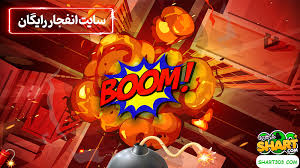Introduction
The Joker card, often considered the wild card of the deck, adds a unique and exciting twist to various card games. With its vibrant imagery and flexible role in gameplay, the Joker has become a staple in both traditional and modern joker card balance. This article explores the history, significance, and uses of the Joker card in card games and beyond.
History of the Joker Card
The Joker card originated in the United States during the mid-19th century, specifically around the time of the Civil War. It was created as a trump card for the game of Euchre, a popular game at that time. The Joker was initially designed to be a wild card, capable of representing any other card in the game, thus adding an element of strategy and unpredictability.
As the popularity of playing cards spread, the Joker began to appear in standard decks, becoming a common fixture in various games. By the late 1800s, it had established itself as an essential card in many card games, including Poker, Rummy, and Bridge.
Design and Symbolism
The design of the Joker card can vary widely, but it typically features a jester or clown figure, symbolizing fun, unpredictability, and mischief. The imagery often includes bright colors and whimsical designs, making the Joker visually distinct from other cards in the deck.
In terms of symbolism, the Joker represents flexibility and adaptability. As a wild card, it embodies the idea that unexpected elements can change the outcome of a game, reflecting the unpredictability of life itself.
Uses of the Joker Card in Games
The Joker card’s versatility allows it to be used in various ways depending on the game being played:
- Wild Card: In many games, the Joker can represent any other card, allowing players to complete combinations or achieve certain objectives. For example, in Poker, players may use a Joker as a substitute for any card they need to make a winning hand.
- Bonus Card: Some games treat the Joker as a bonus card that can yield extra points or advantages. For instance, in Rummy, players might score additional points for using a Joker in a set.
- Game-Specific Roles: Certain games have specific rules regarding the Joker’s use. In some variations of games like Canasta, the Joker can serve as a powerful card that helps players achieve high-scoring melds.
The Joker in Popular Culture
Beyond its role in card games, the Joker has permeated popular culture, often symbolizing chaos and unpredictability. It has been featured in literature, movies, and television, most notably in the character of the Joker from DC Comics, who is portrayed as Batman’s arch-nemesis. This character embodies the essence of chaos and unpredictability, drawing inspiration from the whimsical nature of the card itself.
Conclusion
The Joker card is more than just an ordinary card; it represents flexibility, fun, and unpredictability in both card games and popular culture. Its unique role as a wild card has made it a favorite among players, adding layers of strategy and excitement to games. Whether you’re playing a friendly game of Poker or enjoying a round of Rummy with family and friends, the Joker card is sure to bring a smile and a touch of chaos to the table. Its enduring presence in the world of playing cards speaks to its significance as a beloved and dynamic element of gaming.


